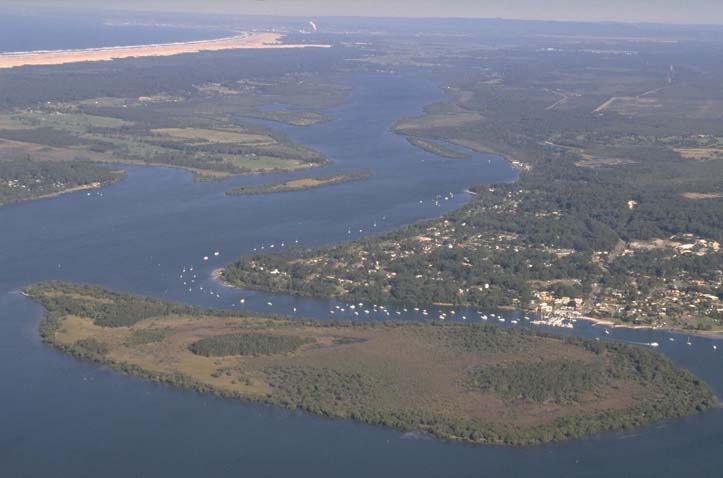Tilligerry Creek is located on the Hunter coast of New South Wales and flows into Port Stephens from the south.
It is classed as a lake and is lined almost entirely by mangroves. Tilligerry Creek supports a large oyster industry.
Water quality report card
As part of our water quality monitoring program we assess the water quality and ecosystem health of an estuary using a range of relevant indicators. We sample a subset of the estuaries located between Taree and Wollongong every 3 years. The most recent sampling in Tilligerry Creek was completed over the 2021–22 summer, when 2 sites were sampled on a monthly basis.
This report card represents 2 water quality indicators that we routinely measure: the amount of algae present and water clarity. Low levels of these 2 indicators equate with good water quality.
Algae
Water clarity
Overall grade
The report card shows the condition of the estuary was poor with:
- algae abundance graded poor (D)
- water clarity graded poor (D)
- overall estuary health graded poor (D).
Grades for algae, water clarity and overall are represented as:
- A – excellent
- B – good
- C – fair
- D – poor
- E – very poor.
Go to estuary report cards to find out what each grade means, read our sampling, data analysis and reporting protocols, and find out how we calculate these grades.
We have monitored water quality in Tilligerry Creek since 2010. This table shows the water quality grades for this estuary over that time.
| Year | Algae | Water clarity | Overall grade |
|---|---|---|---|
| 2010–11 | D | E | E |
| 2013–14 | C | D | D |
| 2016–17 | D | E | D |
| 2019–20 | D | E | D |
Physical characteristics
| Estuary type | Lake |
|---|---|
| Latitude (ºS) | –32.73 |
| Longitude (ºE) | 152.05 |
| Catchment area (km2) | 114.8 |
| Estuary area (km2) | 20.5 |
| Estuary volume (ML) | 51,714.4 |
| Average depth (m) | 2.5 |
Tidal prism
Tidal prism data is available for this estuary. This tidal prism was measured in 1993.
| Tide state | Flow (ML) | Local tidal range (m) | Sydney Harbour tidal range (m) |
|---|---|---|---|
| Ebb flow | 5,450 | 1.06 | 1.04 |
| Flood flow | 4,850 | 1.11 | 1.08 |
Notes: km2 = square kilometres; m = metres; m3 = cubic metres; ML = megalitres.
Water depth and survey data
Bathymetric and coastal topography data for this estuary are available in our data portal.
Land use
Tilligerry Creek drains a highly disturbed catchment. Claiming estuarine saltmarsh for agriculture is the largest land use change. Other prominent features within the catchment include Newcastle airport, the Royal Australian Air Force base at Williamtown and several small residential communities. There is some remnant bushland.
National and marine parks
- Tilligerry State Conservation Area is the largest conservation area in this catchment. This conservation area is closed to public access to protect water extraction infrastructure and maintain groundwater quality.
- This estuary is situated within the Port Stephens Great Lakes Marine Park.
Community involvement
- Tilligerry Habitat Association is a volunteer organisation that offers many ways locals can get involved in the regeneration of a 9-hectare reserve along the local foreshore at Tanilba Bay. The site includes an educational and interactive environment centre.
- Lemon Tree Passage Parks, Reserves and Landcare Group facilitates working bees in the Tilligerry Creek region.
Seafood harvest area status
The NSW Food Authority website lists the current status of oyster/shellfish harvest areas.

Aerial view of Tilligerry Creek estuary.
Local government management
Local councils manage estuaries within their area unless the estuary is attached to a marine park.
This estuary is managed by Port Stephens Council and the NSW Department of Primary Industries and Regional Development as part of the Port Stephens Great Lakes Marine Park.
The Tilligerry Creek Catchment Management Plan is available on the council’s website.
Threatened species
Tilligerry Creek and the plant communities in its catchment area provide important habitat for the vulnerable grey-headed flying fox.
Read more about the biodiversity in our estuaries.